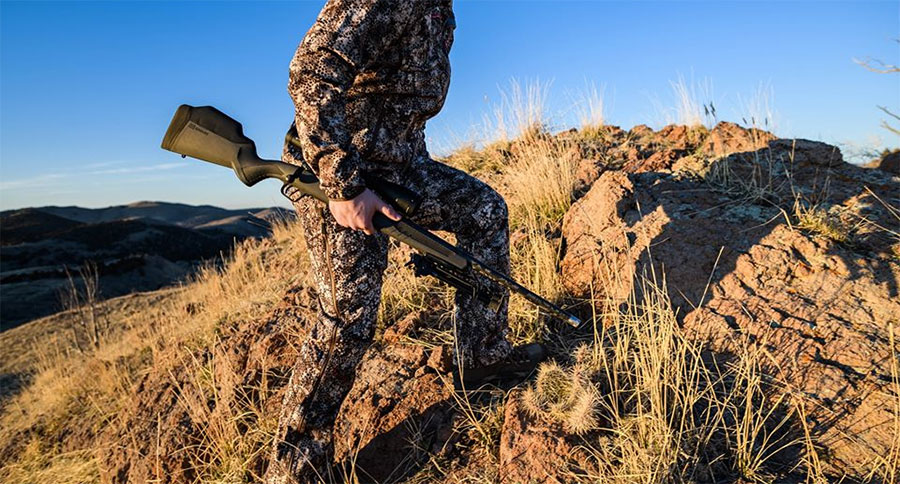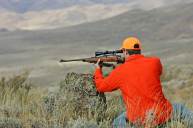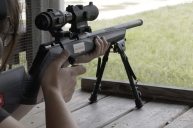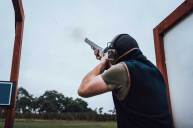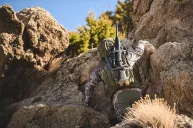How are you supposed to simulate real hunting scenarios from a bench at a shooting range? We've got some tips.
Everyone knows about (and frankly most of us enjoy) the build up to hunting season. You break out your firearms, re-up on ammo, and set out some paper targets.
Once you've zeroed your rifle or patterned your shotgun, it's easy to feel good about where you're at. But that stops well short of most real hunting scenarios.
To help address this common problem, we turned to Savage Arms, a company that knows a thing or two about hunting and the things you need to be successful at it.
Together with Savage, we've come up with some pretty good tips and ideas that can help you prepare for when the pressure and high stakes of a real hunt come into play.
Aim for Realistic Targets
Take a hint from 3D archery: shooting at an actual animal silhouette is almost always going to be more advantageous than shooting at a bullseye target. It may not be reasonable to use the same foam-based targets as bowhunters, but there are plenty of game animal-shaped targets that depict an actual elk or bear, and they're pretty easy to find. Use these and use them often.
Hitting the center of a bullseye target consistently is all well and good, but it says nothing about your ability to find, aim at, and hit the vital organs of a big-game animal. The more precise you can be with an animal's shape, the better off your shots will be on each hunt. Until deer start taping paper bullseyes to the sides of their bodies, this is the type of target you should be practicing with.
Increase Your Heart Rate
Imagine you're on an elk hunt in the mountains, and you've just crested a high point after climbing a steep, tough-to-handle hill. You spot a set of antlers and immediately hit the deck; this is the moment you've waited for, but you're out of breath and your heart's pounding from the climb.
Will you have time to catch your breath and stop your heart from pounding? Or, if you must, will you be able to steady yourself and make a shot quickly, having just expended so much energy?
To help prepare you for these types of situations, find a way to safely and subtly get your blood pumping. Try 15 or 20 jumping jacks behind the shooting bench, or jog around the parking lot once or twice before trying more shots.
It sounds silly, but learning how long it takes to slow your heart rate (and how steady you can be before it does) will assist you in making smart, ethical shots with a higher success rate.
Steady as She Goes
Using a shooting vise while seated at a shooting bench is about as good as it gets. That situation is perfect for honing your shot and making sure your gun's accuracy is up to snuff, but it's about as useless as it gets when you're actually hunting. If you utilize a vise and bench during legitimate hunts, consider yourself among the lucky few.
It's much more likely to encounter situations where, at most, you've got the bottom sill of a box blind's window, or a less-than-flat rock that sits waist high to use to steady your firearm.
In other words, spend time using and adapting to new positions (as long as they're allowed at the range you're shooting). Try a shot fully freehand while standing up. Now find a tree trunk to help keep things still. Go down on one knee, take a shot, then switch knees and repeat; is one easier to shoot from than the other?
Figuring out the best positions that work for you and your gun ahead of time will help avoid fumbling through a shot attempt when you're finally hunting.
Build a Ballistics Chart
We'd all like to think a shot from a firearm will be the same each time, but anyone with an ounce of experience knows that isn't always true. Thankfully, we've learned we can rely on Savage to produce consistency based on a lineup of innovations that work together to promote accuracy. Combine that with high-quality ammunition, and you can really learn a lot about your rifle's capability.
But to fully know and understand what elevation, air density, and wind speed does do a fired bullet round, you really ought to create your own personal ballistics chart. Go as far as using a chronograph to find your velocity, shoot at different distances to prove your calculated ballistics figures, then modify the ballistics coefficient to match up with your actual shots. There's more info on this technique on the Savage Arms website, but getting this deep can and will make a significant difference, especially when you're shooting at long ranges.
If you aren't simulating some sort of hunting-centric shot with your firearm, then you really aren't differentiating between "hunting prep" and "a fun trip to the range." Take these tips to heart if you want to be serious leading into hunting season, and don't blow it off as unimportant.
Using a little of your imagination while preparing will help get you closer to the reality of a good, ethical shot and a harvested animal.
NEXT: GUN REVIEW: THE SAVAGE ARMS A17 HM2 TAKES VARMINT GUNS TO THE NEXT LEVEL
